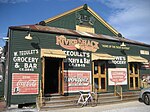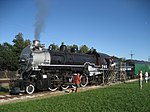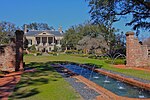Pontiff Playground
1952 establishments in LouisianaAmerican football venues in LouisianaAthletics (track and field) venues in LouisianaBaseball venues in LouisianaBasketball venues in Louisiana ... and 11 more
Buildings and structures in Metairie, LouisianaCross country running courses in LouisianaHigh school football venues in LouisianaLouisiana geography stubsParks in LouisianaSoccer venues in LouisianaSoftball venues in LouisianaSports venues completed in 1952Tennis venues in LouisianaTourist attractions in Jefferson Parish, LouisianaVolleyball venues in Louisiana
Wally Pontiff Jr. Playground, formerly Metairie Playground, is a Jefferson Parish public playground located at 1521 Palm Street in Metairie, Louisiana. It is Jefferson Parish's oldest public playground.
Excerpt from the Wikipedia article Pontiff Playground (License: CC BY-SA 3.0, Authors).Pontiff Playground
Peter's Tract,
Geographical coordinates (GPS) Address Nearby Places Show on map
Geographical coordinates (GPS)
| Latitude | Longitude |
|---|---|
| N 29.979075 ° | E -90.139604 ° |
Address
Peter's Tract 1501
70001
Louisiana, United States
Open on Google Maps







